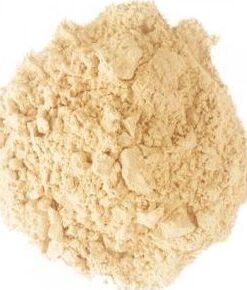It’s difficult to know exactly when people started using ayahuasca, but the first records of people from Europe encountering it comes from the 16th century. There were missionaries from Spain and Portugal who went to South America and found that the indigenous people there were using ayahuasca. These missionaries described it as the work of the devil, obviously sparking controversy on its use between different cultures. It was written about throughout the following centuries, but it became more widely talked about in the 1950s when writer William Burroughs sought it out when traveling through South American. He was hoping he could find a cure for opiate addiction. Then, ayahuasca was written about in the book True Hallucinations by the McKenna brothers.
Ayahuasca has long had its roots in religious ceremonies. For example, in Brazil, it’s used even in modern religious concepts. The Santo Daime is one example of a religious movement that integrates the use of ayahuasca.
In more recent years ayahuasca has been written about by writers like Wade Davis and Martin Goodman. It was even mentioned by radio personality Robin Quivers and was featured on an episode of Law & Order: SVU.
So why do people use ayahuasca and what is it about this substance that has captivated people for so many centuries?It’s used to create a psychedelic experience, like other hallucinogens. In traditional cultures, it’s often used by shamans or medicine men to open up communication with nature. These spiritual leaders also use it to determine what’s causing someone to be sick at the spiritual level. In some religious ceremonies including in Brazil, ayahuasca is taken by everyone who participates in the ceremony, and they sing and chant as they drift into a trance.
In contemporary Western society, there is an interest in ayahuasca by people who are intrigued by the use of mind-altering substances to overcome fears and explore the capabilities of their minds.
People also often become interested in ayahuasca after hearing anecdotal stories of people who have used it to heal a variety of problems including addiction and depression. Of course, this isn’t the only psychedelic that’s been used for that purpose.
People are often interested not just in the stories and myths surrounding ayahuasca, but also in understanding how this mysterious tea works on the brain.First, it’s important to understand that the ayahuasca vine on its own doesn’t necessarily have psychoactive characteristics, but when it’s combined with the Psychotria Viridis plant to create a tea, there is a psychedelic effect. This tea contains DMT, which is something with a structure similar to serotonin. DMT will be discussed more below.
Within about a half-hour after consuming ayahuasca tea, people experience something that they describe as hallucinations. People who have used it don’t feel like it’s the same as a trip they might get with LSD, however, and they describe it as more emotional and spiritual, as opposed to being recreational.
There have been brain scans showing the use of this tea can decrease activity in certain areas of the brain. These areas, when they’re overactive, are associated with conditions like anxiety and social phobia as well as depression, so it stands to reason that this is why people feel like consuming ayahuasca might be beneficial for these disorders. The DMT component of ayahuasca is also related to proteins that help with memory and the regeneration of neurons.
Often some of the people that are most likely to use ayahuasca are working through a substance abuse problem or addiction, alcoholism, or depression. Some people who are recovering addicts or who have experienced trauma in their life say that the use of ayahuasca tea has helped them work through these situations and heal themselves, although this is, of course, subjective and difficult to measure.
Effects of ayahuasca
There is no safe level of drug use. Use of any drug always carries some risk. It’s important to be careful when taking any type of drug.
Ayahuasca affects everyone differently, based on:
- the person’s size, weight, and health
- whether the person is used to taking it
- whether other drugs are taken around the same time
- the amount taken
- the strength of the decoction.
The effects of ayahuasca are subjective, but may include:
- nausea and vomiting (induced by drinking the decoction)*
- Diarrhoea*
- Euphoria
- Feelings of connection and unity
- Iintrospection
- Intense visual and auditory hallucinations
- Experiencing powerful emotions
- Anxiety
- Moderate increase in blood pressure and heart rate
- Increased body temperature.1, 2
| Quantity | 1 bottle, 2 bottles, 3 bottles, 4 bottles, 5 bottles, 10 bottles |
|---|
Reviews
There are no reviews yet.
Related products
DMT















Be the first to review “Ayahuasca Tea”